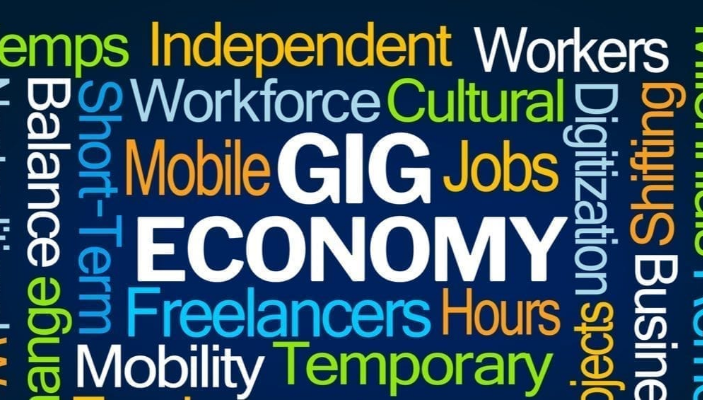Growing a brand today isn’t just about pushing ads—it’s about smart, structured strategy that aligns with how people think, search, and shop. Siege Market is a proven model used by some of the fastest-scaling digital brands. But applying its methods without intention or guidance can lead to shallow results.
This guide breaks down practical Siege Market marketing techniques that help your brand gain visibility, build authority, and increase revenue—without short-term gimmicks or misleading metrics.
What Is Siege Market and Why It Matters
Siege Market is a term used to describe a content- and strategy-driven approach that relies on:
- High-authority publications
- Audience intent mapping
- Long-form educational content
- Strategic link-building through editorial placement
- Tight alignment with modern SEO signals (like Google NLP)
It’s not about chasing traffic alone—it’s about meeting users where they are and guiding them to meaningful action.
Why It Works in 2025
In 2025, Google’s natural language processing (NLP) favors:
- Contextual relevance
- User-first formatting
- Topic authority over keyword stuffing
- Semantic relationships between content elements
Siege Market strategies align with all of this.
Build a Clear Content Foundation
Every successful brand strategy begins with a solid foundation—this includes brand voice, customer journey mapping, and core content assets.
Define Your Audience Personas
Think in terms of intent. Not just demographics like “women aged 25–40,” but goals, pain points, and context. Are they looking to solve a problem, compare options, or educate themselves?
Use this info to map topics with clarity:
| Intent | Sample Topic |
|---|---|
| Informational | What to consider before buying [product] |
| Navigational | Best [product] brands for beginners |
| Transactional | Where to buy [product] at best price |
Develop Cornerstone Content
Cornerstone content serves as a trust anchor. It gives users and search engines a reliable starting point to understand your brand.
Examples:
- Long-form guides with structured subtopics
- Case studies that prove expertise
- Step-by-step tutorials optimized for featured snippets
Use semantic cues and internal linking to enhance relationships between pages. Google’s NLP understands the intent web across your content.
Elevate Your Topical Authority
Topical authority is one of the biggest drivers of organic growth. It’s not about how many articles you have—it’s about how deeply and clearly you’ve covered a specific topic.
Create Thematic Clusters
Instead of publishing scattered articles, build topic clusters with one main piece and supporting articles.
Example:
Main Article:
“Complete Guide to Sustainable Skincare Brands”
Supporting Articles:
- What ‘clean beauty’ actually means
- Common ingredients to avoid in skincare
- How to read skincare labels like a pro
These pieces reinforce one another, improving session time and contextual signals.
Refresh Old Content
Siege Market strategies also involve ongoing optimization. Use tools like Google Search Console to find declining pages, and update:
- Headers with clearer structure
- Outdated statistics or broken links
- Richer FAQs or visual elements (like charts, graphics, and videos)
Use High-Authority Outreach (Without Spam)
Content marketing at scale doesn’t work in isolation. Siege Market thrives on earning authority, not just chasing it.
Editorial Link Building Done Right
Get your content featured in niche-relevant, trustworthy publications. Here’s how:
- Pitch high-value insights, not fluff. Avoid generic press releases.
- Offer expert commentary on trending or evergreen topics.
- Create data-driven stories using your brand’s first-party data.
Example pitch subject line:
“Survey: 72% of Gen Z shoppers now favor resale over retail – Here’s why”
This gives editors something newsworthy to work with and positions your brand as a source, not just a vendor.
Partner with Content Collaborators
Brands don’t need to compete—they can co-create.
Look for creators, newsletters, or blogs in your industry and propose content exchanges or interviews. These are more organic and contextual than cold link swaps, and they perform better with Google’s NLP interpretation.
Apply NLP Principles to Content Structuring
Google’s 2025 algorithm is built to interpret not just keywords, but language intent and contextual clarity.
Structure Your Articles Like Conversational Paths
Use headings and subheadings that mimic how people think and ask questions.
Instead of this:
“Why Use Siege Market for Branding”
Try this:
“How Siege Market Helps Brands Build Trust Faster”
This format reflects natural language search, boosting visibility in NLP-generated snippets.
Write for Scannability and Retention
Use formatting to support comprehension:
- Short paragraphs (1–3 sentences)
- Bullet points for clarity
- Strategic bolding for emphasis
- Descriptive image captions
These elements improve user satisfaction and reduce bounce rates—two signals search engines now monitor in real time.
Leverage Trust Signals and Social Proof
Scaling a brand is also about credibility.
Siege Market helps enhance trustworthiness through embedded authority markers:
Add Testimonials and Case Studies
Real customer feedback is more than social proof—it’s semantic reinforcement. Google picks up on experience-based language, which supports E-E-A-T (Experience, Expertise, Authoritativeness, Trust).
Tip: Use first-person quotes and specific outcomes.
“After switching to [Brand], our onboarding time dropped 45%—and our NPS jumped by 30 points.”
Use Third-Party Validation
- Verified reviews
- Industry awards
- Certifications
- Collaboration badges
Make these visible, but contextual—not overly promotional.
Track What Actually Moves the Needle
Too often, marketers measure traffic alone. Siege Market emphasizes impact over vanity metrics.
Use Meaningful KPIs
Metrics to prioritize:
- Organic conversions (email signups, purchases)
- Time on page and scroll depth
- Return visitor ratio
- Referral traffic from placements
- Growth in branded search volume
This approach lets you build brand equity, not just clicks.
Bonus: Siege Market Mistakes to Avoid
Even good strategies can fail when applied poorly. Here are common traps:
| Mistake | Why It Hurts |
|---|---|
| Over-optimizing for keywords | Reduces readability, triggers spam filters |
| Publishing too frequently without depth | Dilutes topic authority |
| Ignoring user questions | Misses long-tail opportunities and trust points |
| Failing to update content | Leads to outdated advice and search penalties |
Instead of quantity, focus on meaningful quality.
Conclusion: Think Long-Term, Act With Precision
Scaling with Siege Market is not about rushing traffic or chasing algorithms. It’s about building a sustainable digital brand presence through:
- Thoughtful content architecture
- Smart partnerships
- NLP-aware structuring
- Real user value
If your strategy centers on people first, the algorithm will follow. And that’s how lasting growth happens.
FAQs
1. What is Siege Market strategy?
Siege Market is a structured approach to content and digital growth that uses high-quality content, editorial outreach, and topical authority to scale a brand.
2. How is Siege Market different from typical SEO?
Unlike basic SEO, Siege Market focuses on content relevance, user intent, and editorial link-building, aligning closely with how modern search engines evaluate trust and expertise.
3. Can small businesses use Siege Market techniques?
Yes, especially through focused content planning and community-based outreach. Small brands can scale by building authority in niche areas first.
4. Does Siege Market require paid ads?
No. While ads can help boost visibility, the core strategy focuses on organic growth through value-driven content and partnerships.
5. How long before I see results using Siege Market?
Brands typically start seeing noticeable impact in 3–6 months, depending on consistency, content quality, and outreach success.
Would you like a Word or HTML version of this content?

![Scale Fast with Siege Market [Brand Growth Tips]](https://wisheszing.shop/wp-content/uploads/2025/07/Scale-Fast-with-Siege-Market-Brand-Growth-Tips.png)





